Brian Wilson joined a recent webcast to discuss the specialized challenges and innovative solutions that shaped our journey into infrared optical coatings
When our very own President and CEO, Brian Wilson stepped into the spotlight during a recent international webinar hosted by Imaging and Machine Vision Europe, he wasn’t just representing North American Coating Labs, he was sharing lessons learned from one of the most challenging yet rewarding expansions in our company’s 51-year history.
The online panel discussion, “Non-Visible Light Sources for Imaging Applications,” brought together experts from across the globe to explore the rapidly growing world of infrared and thermal imaging. Alongside colleagues from maritime safety technology company CAI and Sony Europe, Wilson found himself fielding questions about an area of coating technology that’s proven both fascinating and humbling.
Three years ago, when we first ventured into infrared coatings, Wilson recalls the decision process with characteristic honesty: “We would go to trade shows, and we would have people asking ‘what’s new?’ And we’d tell them, and they’d ask, ‘What do you do? Infrared coatings?’ I heard this enough times that, over the years, I decided that I should be more serious about looking into this. We already do thin film coatings. It’s a very similar type of process. How hard can it be?”
Famous Last Words
Those famous last words would prove prophetic. As Wilson explained to the international audience, infrared coating work turned out to be definitively different from our traditional visible spectrum applications, though not necessarily harder.
The differences became apparent immediately. “Some of the differences in working with infrared optics and infrared materials and substrates versus visible substrates are some of the handling concerns,” Wilson shared during the webinar. “A lot of the optics made out of infrared materials are far more delicate and brittle than some of the glass materials that are out there.”
The real challenge, however, lay in temperature control. While traditional glass coatings often allow for less stringent heat management, infrared materials demand far greater precision. These delicate substrates require extremely tight temperature regulation during the deposition process to ensure the coatings adhere correctly.
Learning the Hard Way
Some lessons in our infrared journey came through hard-won experience. Wilson shared one particularly memorable example with the webinar audience: a project where stainless steel tooling seemed like the obvious choice for holding parts during coating.
“We did the coating, and the part was perfect in the middle, but around the edges the coating was failing dramatically,” he recalled. The culprit? Heat transfer from the stainless steel tooling was creating thermal differences significant enough to cause coating failure at the edges.
This discovery led us into some innovative types of tooling, using some heat-available polymers and materials such as aluminum that dissipate heat more effectively. It’s exactly the kind of problem-solving that defines our approach: when something doesn’t work, we figure out why and fix it.
Applications That Inspire
The webinar showcased the remarkable breadth of infrared imaging applications our coatings now support. Wilson described projects ranging from firefighter helmets with dual visible and infrared capabilities to archaeological mapping systems uncovering ancient civilizations deep in the Amazon rainforest.
“If you just send drones or normal visible imaging, all you see is a rainforest,” Wilson explained. “But using proper imaging techniques that can look either through that first level of forestry, or even in some cases below the surface of the ground and into the dirt, they’ve detected ancient civilizations that they are still now starting to uncover.”
From agricultural systems that can detect subsurface fruit damage to automotive collision avoidance systems, the applications continue to expand in ways we never anticipated when we first asked, “How hard can it be?”
The Future We’re Building Toward
During the discussion of industry trends, Wilson emphasized something we’ve been saying internally for months: artificial intelligence isn’t just coming to our industry, it’s already here, and it’s getting better fast.
“Learn it, understand it, become comfortable with it. Use it to your advantage,” Wilson advised. “You’ll be ahead of many, many people if you do that, because a lot of people just want to look the other way and not learn about it. But, it’s here, and it’s getting better.”
This perspective reflects our broader approach at NACL: embrace the challenging, learn from the difficult, and always be ready to figure out what we don’t yet know.
What Sets Us Apart
While Wilson acknowledged that “a lot of people can put gold on glass, metal, or plastic,” the distinction lies in everything that surrounds the coating process. It’s the same philosophy that drives our aerospace work: technical capability means nothing without the systems, documentation, and collaborative approach that turns a coating into a complete solution.
Our three-year journey into infrared coatings has reinforced something we’ve always known: every new challenge is an opportunity to learn, grow, and better serve our customers. And when someone asks us “How hard can it be?” We now know the answer: hard enough to be interesting, rewarding enough to be worth it.
The webinar recording remains available on the Imaging and Machine Vision Europe website, where Wilson’s insights continue to reach coating professionals and imaging engineers worldwide.
At NACL, we don’t just apply coatings, we solve complex problems. Whether it’s infrared applications, aerospace systems, or the next challenge we haven’t encountered yet, we’re here to figure it out.






